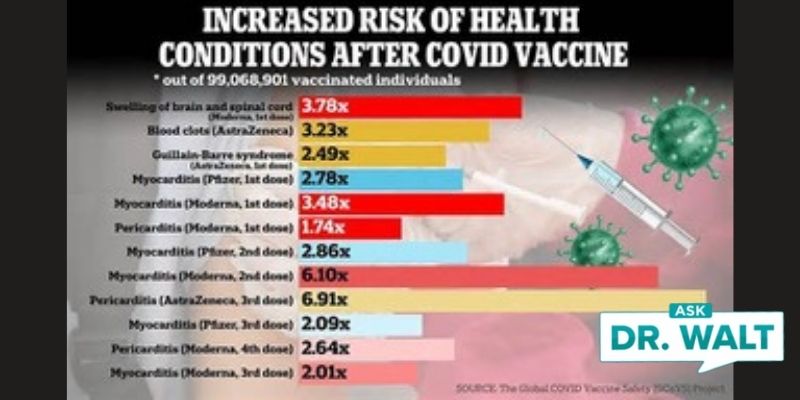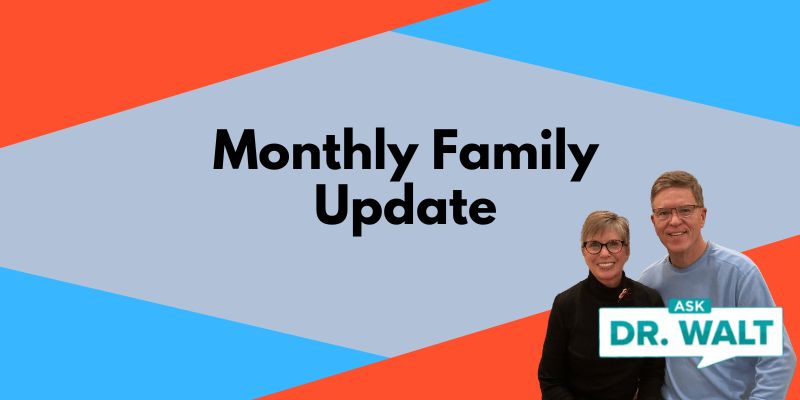How many uninsured people need additional help from taxpayers?
Parents Unnecessarily Wary of 2009 H1N1 Vaccine for Children
September 14, 2009Is the 2009 H1N1 Swine Flu Vaccine Safe? An Update
September 15, 2009To my surprise, the most popular blogs I’ve ever written are on healthcare reform. So, now that we are on the eve of the Senate unveiling its healthcare proposal, I want to put you in the decision-maker’s seat. Which of the uninsured would you cover, if you could make the decision? I hope you’ll take the time to consider this blog and then post your vote in the comment section below.
To quickly review the topic, here’s an analysis (that I’ve slightly adapted) from iReport. You can view the original report here:
- The US Census Bureau says there were 45.7 million uninsured people in the U.S. in 2007.
- Of that amount, 6.4 million are the “Medicaid undercount.” That means these are people who are on one of two government health insurance programs, Medicaid or S-CHIP, but mistakenly (intentionally or not) told the Census taker that they were uninsured. (This figure is based on a 2005 analysis from the Department of Health and Human Services)
- Another 4.3 million are eligible for free or heavily subsidized government health insurance (again, either Medcaid or SCHIP), but have not yet signed up. While these people are not pre-enrolled in a health insurance program and are therefore counted as uninsured, if they were to go to an emergency room (or a free clinic), they would be automatically enrolled in that program by the provider after receiving medical care. There’s an interesting philosophical question that I will skip about whether they are, in fact, uninsured, if technically they are protected from risk.
- Another 9.3 million are non-citizens. It’s almost impossible to break this number down into documented vs. undocumented aliens.
- Another 10.1 million do not fit into any of the above categories. But, these folks have incomes more than 3X (300% of) the poverty level. For a single person that means their income exceeded $30,600 in 2007, when the median income for a single male was $33,200 and for a female, $21,000. For a family of four, if your income was more than 3X the poverty level in 2007, you had $62,000 of income or more, and you were above the national median.
- Of the remaining 15.6 million uninsured, 5 million are adults between ages 18 and 34 and without kids. Most of these folks simply choose not to spend money on healthcare insurance.
- There are then 10.6 million do not fit into any of the above categories. They are:
- U.S. citizens;
- with income below 300% of poverty;
- not on or eligible for a taxpayer-subsidized health insurance program; and
- not a childless adult between age 18 and 34.
Now, to be blunt (and, as a policy matter), we really should NOT care about the number of uninsured. Rather, we should be most concerned about the subset of the uninsured that we think “deserves” or “should have” taxpayer-subsidized health insurance.
This is a judgment call that involves some value choices.
I think most of us would agree that a person who is already enrolled in or eligible for one free or heavily subsidized health insurance program, we can rule them out as needing a second. This simple step reduces the 45.7 million number down to 35 million. This step excludes the Medicaid undercount and Medicaid/SCHIP eligible from our potential target population.
This may be the calculation of President Obama who used to use the 46 or 47 million uninsured number, and in his speech to Congress and the nation dropped the number to 35 million.
And, I think that most of us would agree that the 10.6 million labeled above as the “remaining uninsured” are the most sympathetic target population. I think most Americans would want them covered.
However, now it gets tricky. So, put on your thinking cap:
- Should people with incomes near or above the national median get health insurance subsidized by taxpayers?
- How about non-citizens? Should we distinguish between documented and undocumented non-citizens? Between those who pay taxes and those who do not? Remember that we are not talking about who should get emergency medical care, but instead who should get taxpayer subsidies to finance the purchase of pre-paid health insurance. Does that change your answer?
- Many young adults and childless couples are in good to excellent health. Do they deserve subsidies, when they may be making what they believe to be a rational economic decision and using their financial resources for things other than buying health insurance? Should a 25-year old Yale graduate triathlete making $30K per year get her health insurance subsidized by taxpayers if she chooses not to buy it because she thinks her budget is tight?
There is no clear right or wrong answer to the above questions. But, as a country, we need to make these value choices. So, if you’ve made your decision, let’s look at the effects on the totals for several hypothetical answers to these questions.
Which of the following is closest to your view:
1) Ann wants to subsidize everybody, but agrees that we don’t need to double-subsidize. She excludes the Medicaid undercount and Medicaid/SHIP eligible from her target population and ends up with 35 million people. That is still an enormous amount, but the number she heard in the President’s speech to Congress. Her target population is now 11.7% of the total U.S. population, down from 15%. Put another way, she would like taxpayers to help between 1 in 8 and 1 in 9 Americans who she feels are deserving of subsidies to buy health insurance, rather than the 1 in 6 (46 or 47 million) she has heard before.
2) Bob agrees with Ann, but thinks that subsidies should go to the poor, or at least not to those who have above the median (or near median) incomes. His target population is therefore about 25 million people, way down from 46 million. That is 8.4% of the total U.S. population, or 1 in 12 Americans. That is still a huge number, but it is very different from 1 in 6.
3) Carla agrees with Bob that subsidies should not go to those with incomes near or above the national median. She also thinks that undocumented citizens should get emergency medical care, but not taxpayer-subsidized pre-paid health insurance. If we guess a 50/50 split between documented and undocumented of the 9.3 million uninsured non-citizen, Carla’s target population is about 21 million, or 7% of the total U.S. population. That is roughly 1 in 14 Americans.
4) Doug thinks only American citizens with incomes below the national median (and who are not already eligible for another program) should be eligible for additional aid. His target population is therefore 15.6 million people. That is 5.2% of the U.S. population, or 1 in 19 Americans. If Doug were to further limit subsidies to those below 200% of poverty or 150%, his target population would be a few million people smaller.
5) Edie agrees with Doug, but thinks that if you are a young adult without kids, you should fend for yourself. Her target population is 10.6 million people, or 3.5% of the total U.S. population. That is 1 in 28 Americans.
These are, of course, not the only possible answers, but they are a representative.
Even for the most “liberal” set of answers (Ann’s), the headline numbers we hear in the press overstate the extent of the problem by more than 10 million people.
And, even Edie’s narrowest 10.6 million target population is still a lot of people who lack health insurance.
So why does it matter that the press and policymakers get the numbers right?
- If we misdiagnose the problem, we could easily design the wrong policy solution which is precisely what we are witnessing on Capitol Hill. A solid quantitative understanding of who we would like to help and why is important.
- Health insurance subsidies currently cost taxpayers tens of billions of dollars each year. If we target these funds well and prioritize, we can help more of the people whom we think are deserving of additional assistance, and fewer of those who need less help. If we target those funds poorly, we will waste a lot of money. This point is independent of the total amount we spend on subsidizing health insurance.
- Health insurance competes with other policy goals for an enormous but still ultimately limited pool of taxpayer funds. We should neither overstate nor understate the problem to be solved, so that the tradeoffs with other policy goals can be considered fairly.
When you hear “46 million uninsured,” or “47 million uninsured,” or “1 in 6 Americans don’t have health insurance,” remember that this is technically correct but misleading.
I think the more important question is, “How many uninsured people who already qualify for tax-subsidized programs need additional help from taxpayers?” But, more importantly, what do you think?
Again, thanks to iReport for this excellent analysis. You can view the original report here. And, here are the topics for my series on Health Myths:
- Health Myth #1: “The U.S. has one of the highest infant mortality rates in the developed world.”
- Health Myth #2: “About 46 million Americans lack access to health insurance.”
- Health Myth #3: “The uninsured can’t afford to buy coverage.”
- Health Myth #4: “Most of the uninsured do not have health insurance because they are not working and so don’t have access to health benefits through an employer.”
- Health Myth #5: “The estimated 45 million people without health insurance lacked health insurance for every day of the year.”
- Health Myth #6: “Government-run universal health care would increase the international competitiveness of U.S. companies.”
- Health Myth #7: “The cost of uncompensated care for the uninsured significantly increases hospital costs.”
- Health Myth #8: “Nationalized health care would not impact patient waiting times.”
- Health Myth #9: “Insurers cover less today than they did in the past.”
- Health Myth #10: “Preventive Medicine Saves Money”





